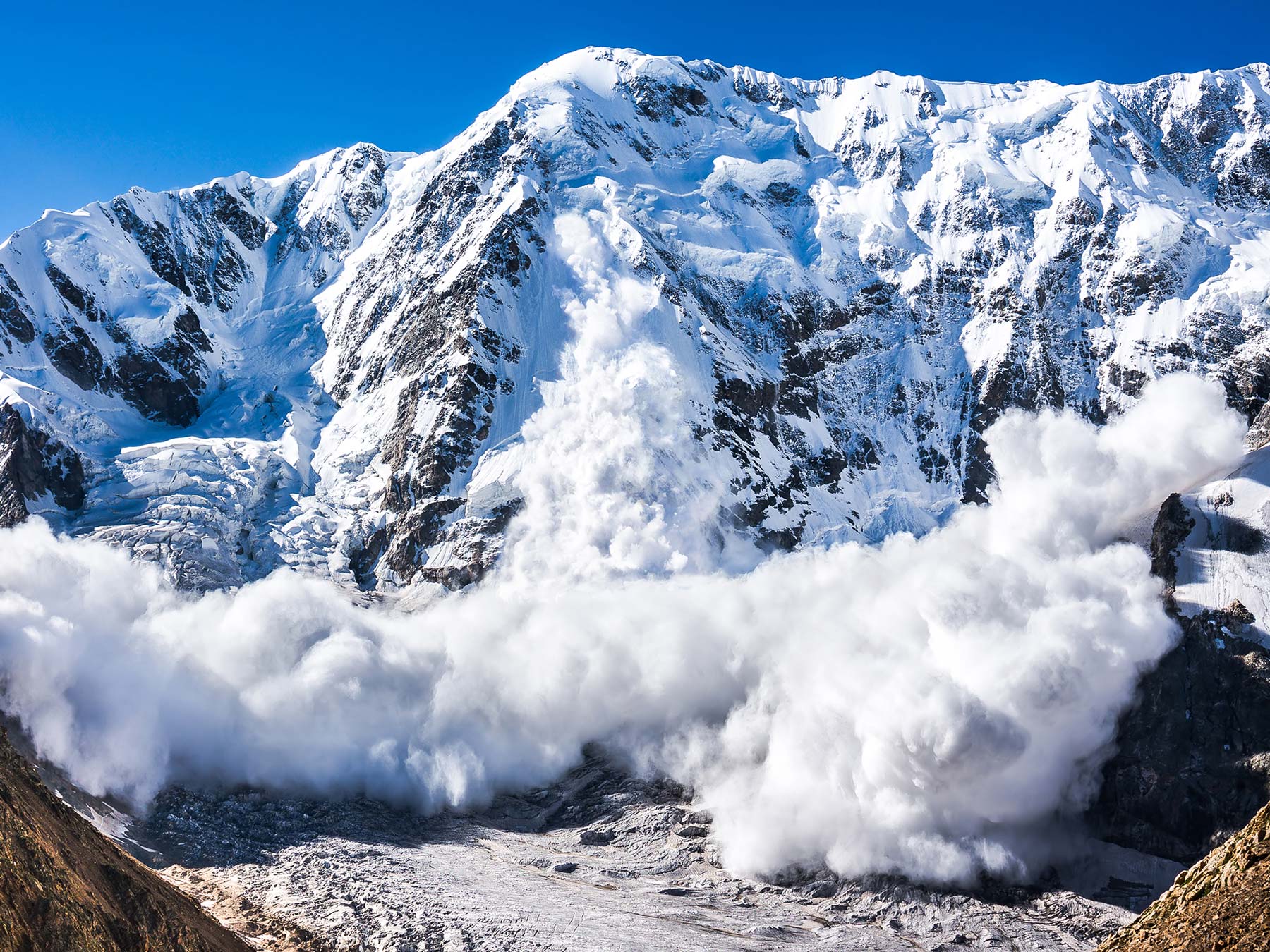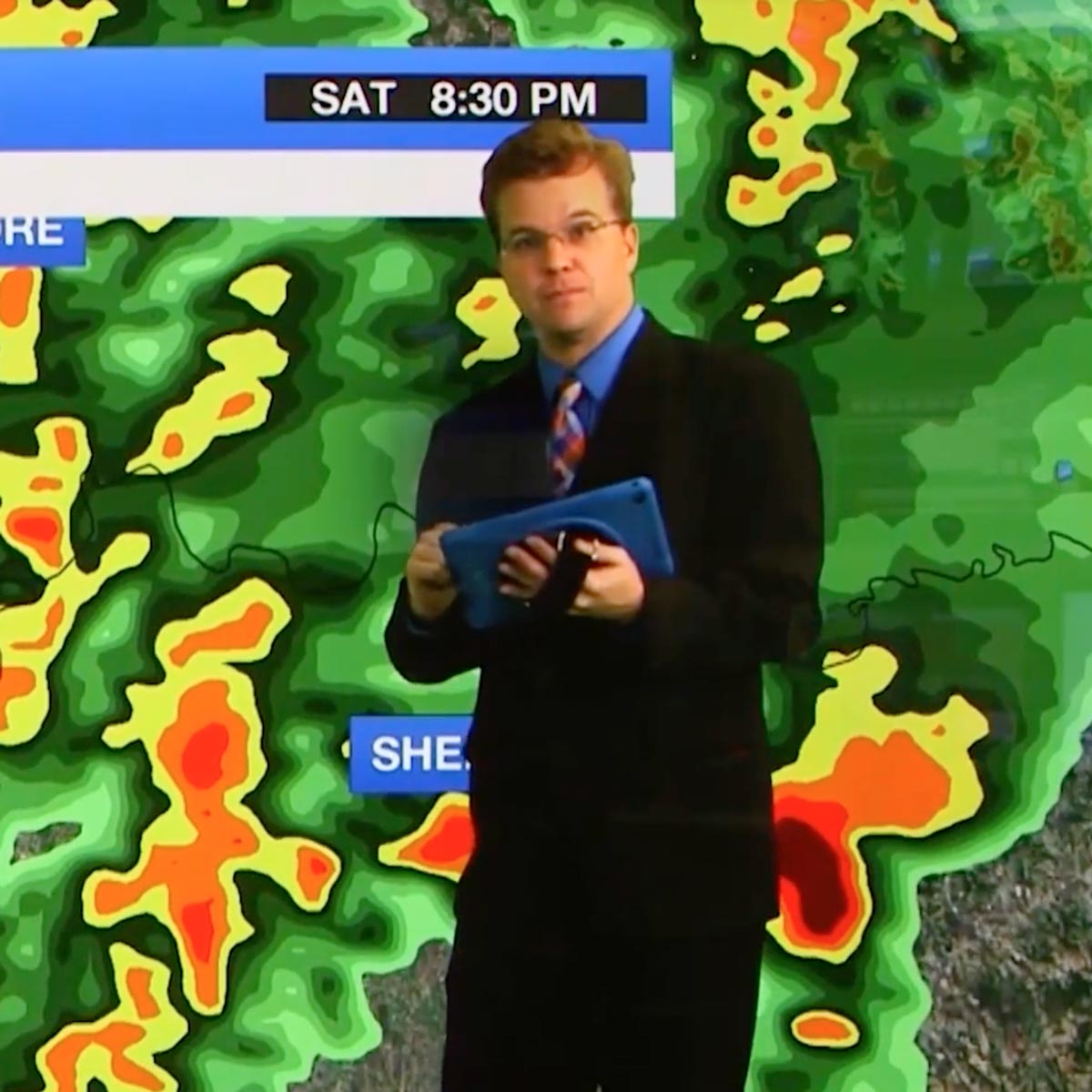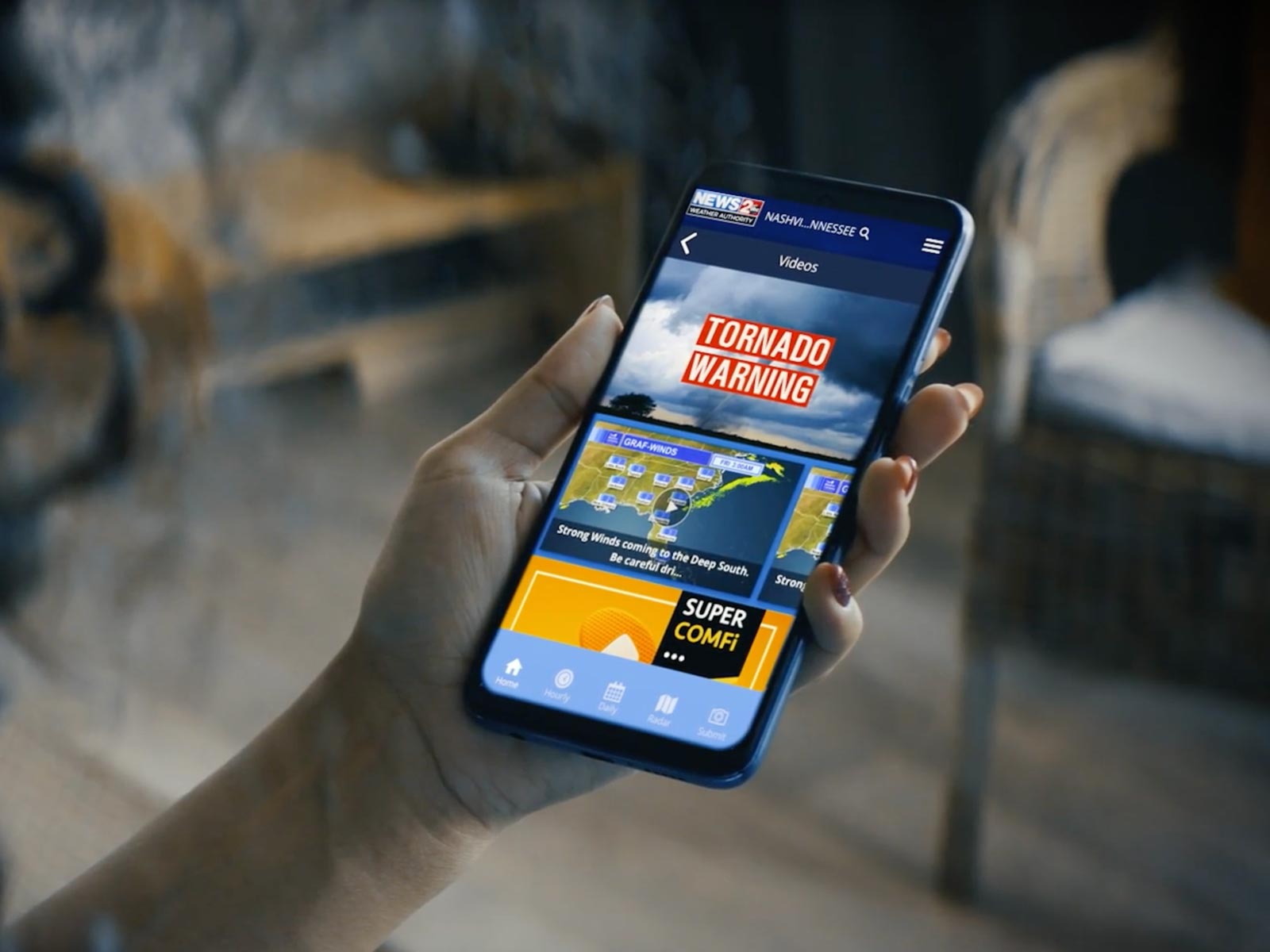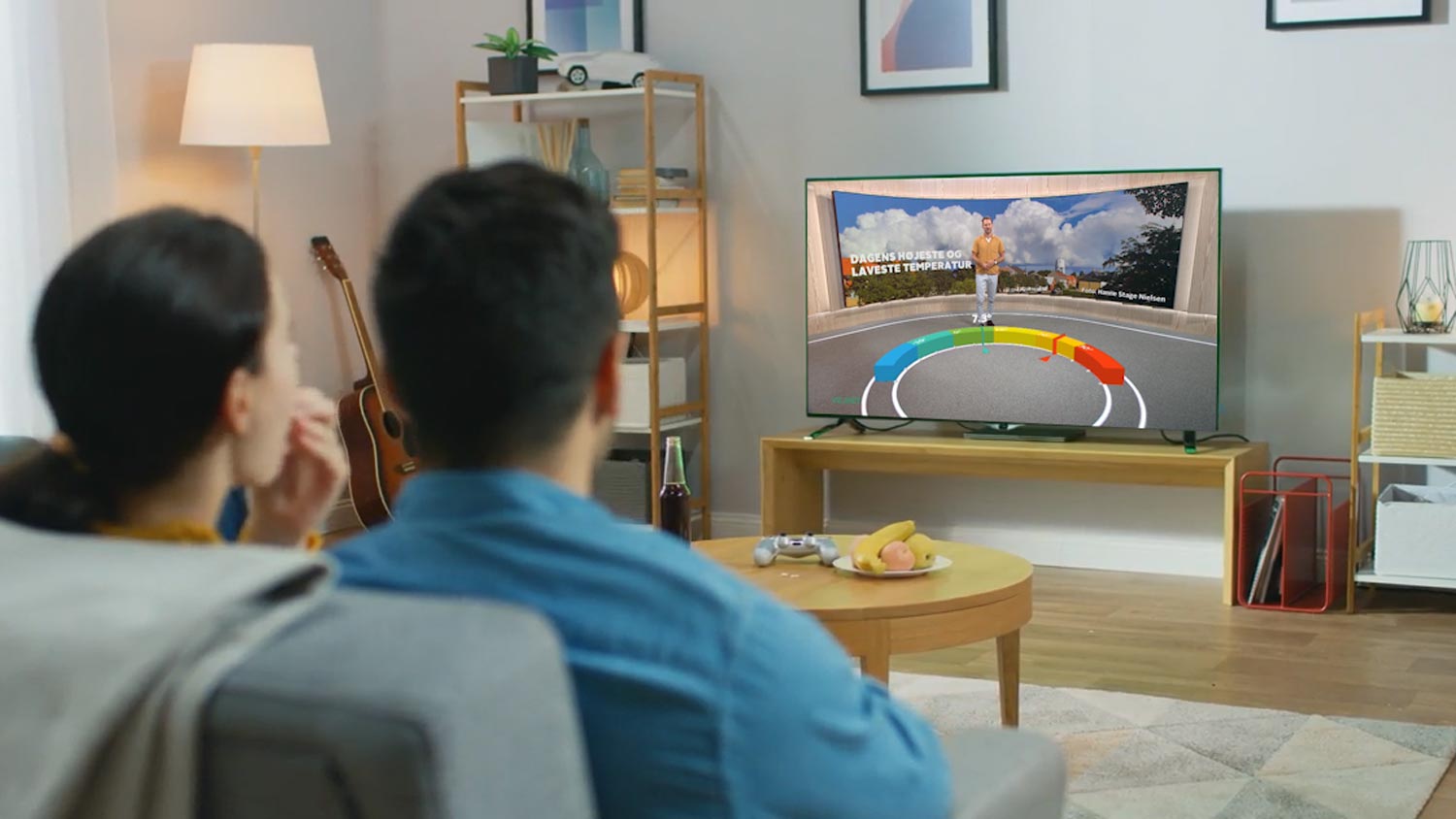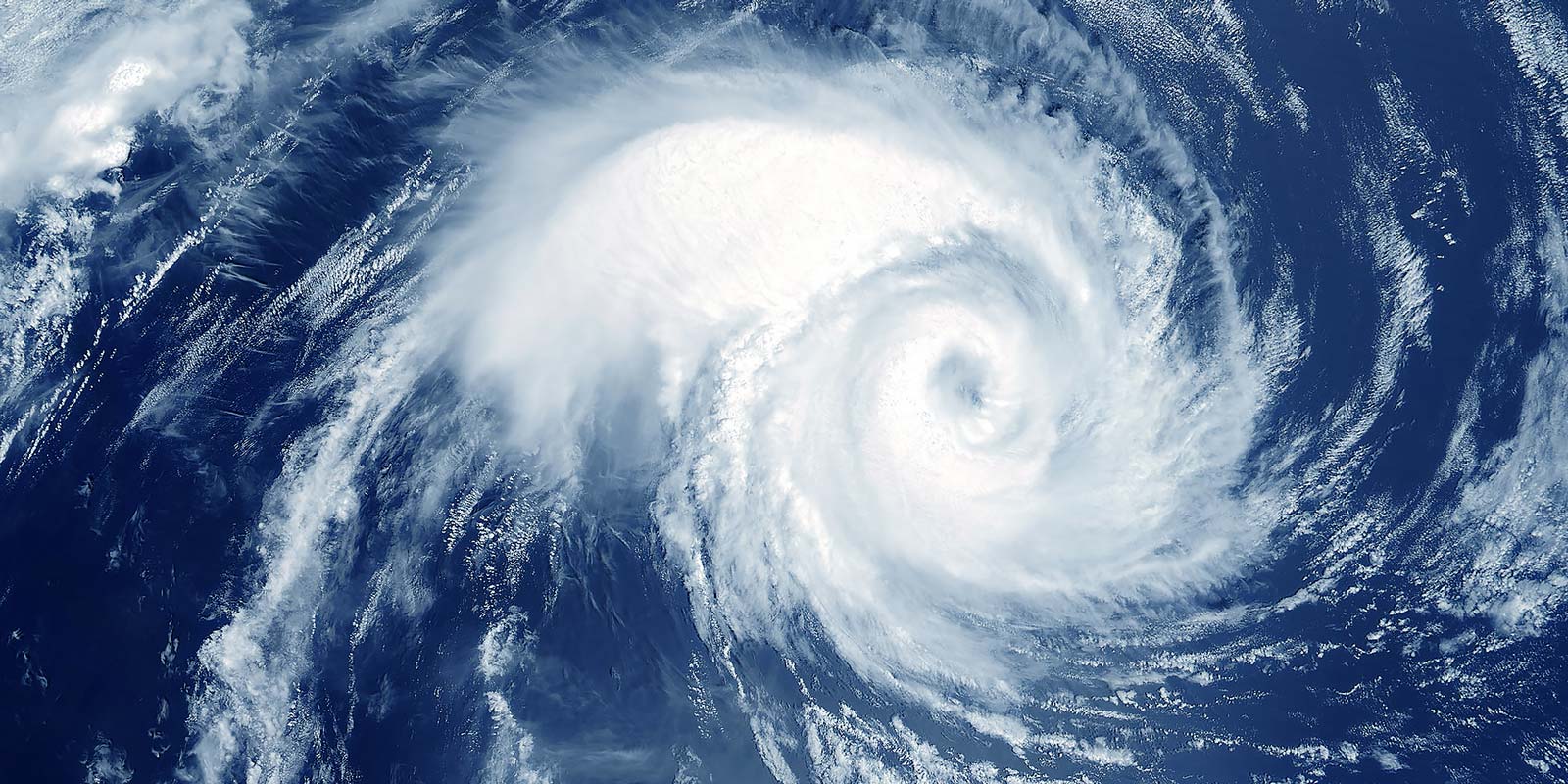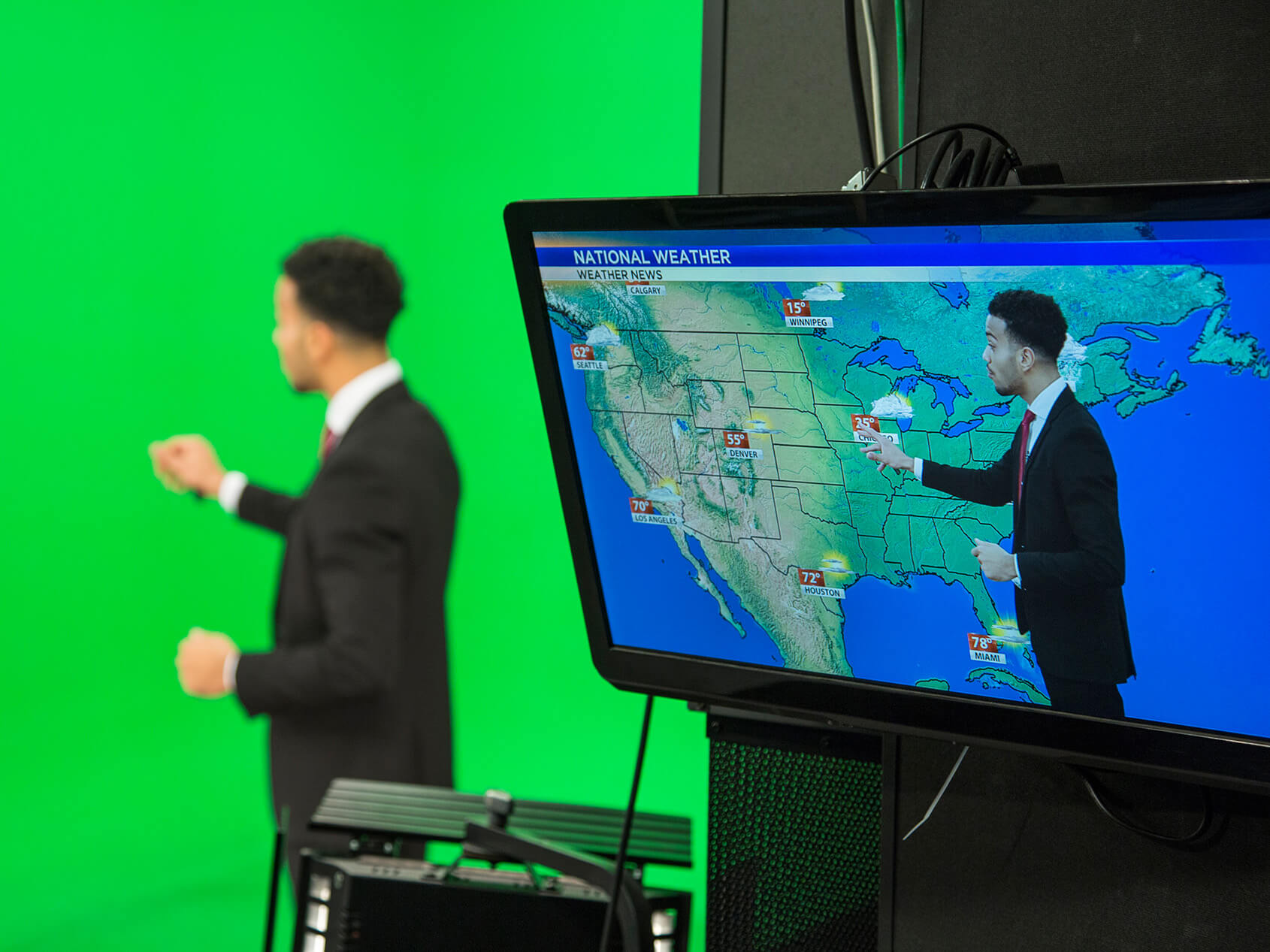Weather intelligence for the future: Crafting a strategic enterprise approach to changing environmental conditions
Continue readingChallenge
High on the rooftop of an office building in downtown Denver, Colorado, the conditions for an avalanche are forming. A snow-covered mountain rises from below. Wind currents push the snow to the mountain’s leeward slope. Heavier snow starts to fall, accumulating, creating a slab. The slab soon buckles under its own weight, cascading down the mountainside as an avalanche.
The avalanche isn’t real, of course. It’s augmented reality (AR) made possible by Max Reality. A big fan of the technology is Ashton Altieri, Morning Meteorologist at KCNC-TV in Denver. Altieri uses the solution for weather presentations. According to the two-decade industry veteran, people have always craved weather information.
“Our viewers always want to know what’s happening with the weather,” he explains. “They’re often interested in climate statistics, particularly after big weather events. In my nearly 20 years in broadcast meteorology, that hasn’t changed.”
What has changed is the competitive landscape. Today’s viewers not only have more sources and options for accessing news and weather information than ever before, but there are also more industry players vying for their attention. Consequently, weather broadcasters are getting creative to differentiate themselves.
Altieri elaborates, “We’re very aware of who our competition is and what they’re doing. So when it comes to weather, we try to distinguish ourselves by telling the weather story differently than our competition does.”
KCNC-TV has a legacy of staying ahead. In 2013, it was the first station in Colorado to introduce a weather station on wheels capable of live mobile transmission: the CBS4 Mobile Weather Lab. In 2011, KCNC-TV was an early adopter of the WSI Max base software system and two of its add-on components, Max Storm and Max Studio technologies. The tools enabled KCNC-TV’s meteorologists to create multidimensional weather presentations, track storms and interact with their visualizations during a weathercast.
KCNC-TV’s next move was in 2017, when it built the CBS4 Outdoor Weather Lab. More than just a rooftop weather deck, the lab is outfitted with sophisticated weather equipment. Today, the 1,200 square foot space which sits on the roof of the station’s four-story headquarters is Altieri’s home for explaining weather from a scientific standpoint.
However, designing an outdoor weather broadcasting studio comes with specific challenges; namely, the weather itself. For instance, housing and protecting Max workstations outdoors was deemed impractical.
“We also invested in very large outdoor monitors that would display graphics originating from the Max system,” recalls Altieri. “It worked well at night but during the day, the sun made it difficult for viewers to see the content on the monitor. We realized we needed different solutions, including an interface to drive Max remotely as well as graphics that could be clearly seen any time of day.”
Solution
Visualization tools and remote control
With Max Connect technology, which is an iPad interface for the Max software system, members of the KCNC-TV Weather Team are free to move away from their desks. They can easily broadcast from the Outdoor Weather Lab or other remote sites, and control their weather presentations using handheld Apple iPad tablets. They can also access a full range of telestration tools to support their weather presentations.
“We chose Max Connect because it was an easy way for us to bring the tools of Max into the Lab using an iPad instead of desktop workstations,” says Altieri. “Plus, Connect is extremely easy to use, so it’s worked out quite well.”
To eliminate the glare issue, the station uses the AR capabilities of Max Reality. Altieri adds, “Suddenly sun glare wasn’t a problem anymore. Reality made the graphics extremely crisp and easy for our viewers to read — not to mention all the really cool, sophisticated animations you can do.”
To create the ‘cool’ content, the weather department at KCNC takes advantage of the software’s built-in animations and templates, or lineups. The department also downloads and customizes content from The Weather Company’s Weather Community portal.
In addition, The Weather Company provided training for the weather and graphics team at KCNC to create sophisticated, original lineups. After an artist on the graphics team builds a lineup, Altieri can use it again and again, changing it by simply dropping the content of the day into the lineup. In this way, the station can easily use Max Reality software in its daily newscasts without having the graphics team build new animations from scratch.
One such lineup is the Outdoor Weather Lab spin monitor. During weathercasts from the Outdoor Weather Lab, the AR-based monitor rises from the deck and unfolds to display weather information — all with just a single click on an iPad. Altieri and his colleagues use the spin monitor on a regular basis.
“We wanted the Lab to be an area where we could put far more emphasis on science and dive more deeply into weather stories than we did in the past,” explains Altieri. “We use the tools available to us in the Max system to explain weather instead of just sharing the forecast.”
The Weather Company technologies are designed to work together, even in remote circumstances. For instance, KCNC-TV’s meteorologists use the telestration tools in Max Connect with lineups in Max Reality to help explain weather conditions from the field.
Results
Weather presentations with a wow factor
KCNC-TV uses Max technologies in every weathercast — and viewers love it. “When we first launched the Outdoor Weather Lab there was a lot of positive viewer feedback about the coolness factor and seeing graphics move up out of the ground,” recalls Altieri. “No one had really ever seen anything like that. We were the first in the market to have Connect and Reality.”
In addition to giving the station a competitive edge, the Max software also helps drive viewers from the station’s social platforms, over the top (OTT) content and mobile apps, back to the television channel itself — which remains the primary source of station revenue. The station then retains its audience using compelling graphics combined with good storytelling.
Max technologies provide information from the interactive Convective Analysis and Storm Tracking (iCAST) system and the National Digital Forecast Database (NDFD). As of October 2020, Max technologies also offers the High-Resolution Rapid Refresh for smoke (HRRR-smoke) model, helping meteorologists forecast smoke concentrations.
In the tradition of staying a step ahead of the competition, KCNC-TV will soon begin a trial of Max Engage software. “We were the first in Colorado to have Connect and Reality,” concludes Altieri. “And we’re still the only station in Denver that has both. Now we are going to be the first customer within our CBS group that will have Reality, Connect and Engage.”
About KCNC-TV
Based in Denver, Colorado, in the US, KCNC-TV, CBS4, is part of CBS Television Stations, a division of ViacomCBS. KCNC-TV signed on the air in 1953 as KOA-TV, and became an affiliate of the CBS television network in 1995. In 2003, KCNC-TV changed its on-air branding to CBS4. The station broadcasts local and national newscasts and CBS prime-time entertainment, late night talk shows and sports. Programs include 60 Minutes, the N.C.I.S. franchise series and CBS4 Sports, including the Denver Broncos and NFL Football. KCNC-TV has won numerous Emmys, including the Overall Excellence Award.
Let’s talk!
To learn more about the The Weather Company solutions featured in this story, contact our experts today.
Contact us
